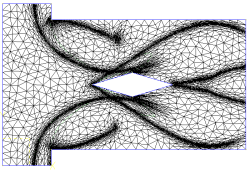
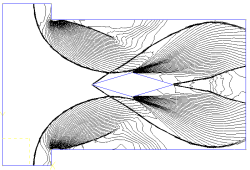
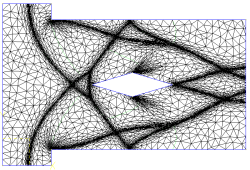
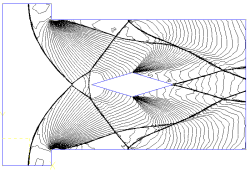
Transient anisotropic mesh refinement. Meshes (left) and density contours (right) after 0.4 (top) and 1.2 (bottom) seconds.
Next pictures show closups of meshes at iteration 120. We see obviously the good behavior of mesh adaptation at the intersection of shocks.

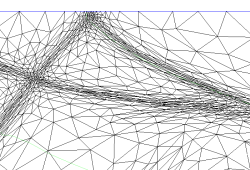
Mesh closups.
3D Aniso. Next picture show a 3D anisotropic mesh that was constructed using an analytical metric field.
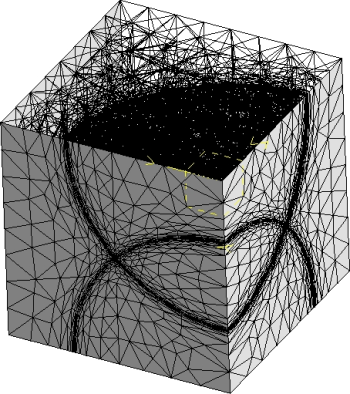
Anisotropic 3D mesh.
Analytic metrics are of course not the final aim of all that. We then consider the classical problem of a planar shock moving at Mach 10 and hitting a wedge (the double mach reflexion). For this simulation, we have chosen a wedge of final height so that the problem is 3D. This is our first attempt to produce anisotropicly refined meshes based on flow solutions.
Next pictures show meshes and density profiles at t = 0.3.
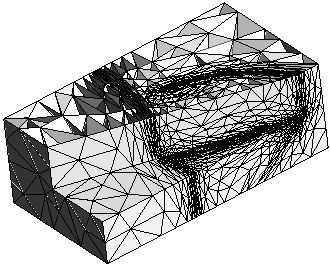
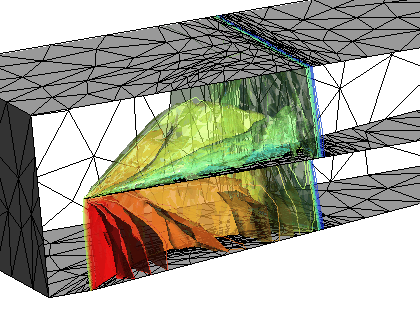
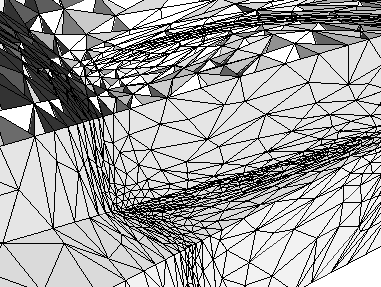
Refined 3D meshes as well as a (not so) nice picture of density isosurface. We still have to work on transparency on Gmsh.
More infos about anisotropic mesh refinement can be found on this paper